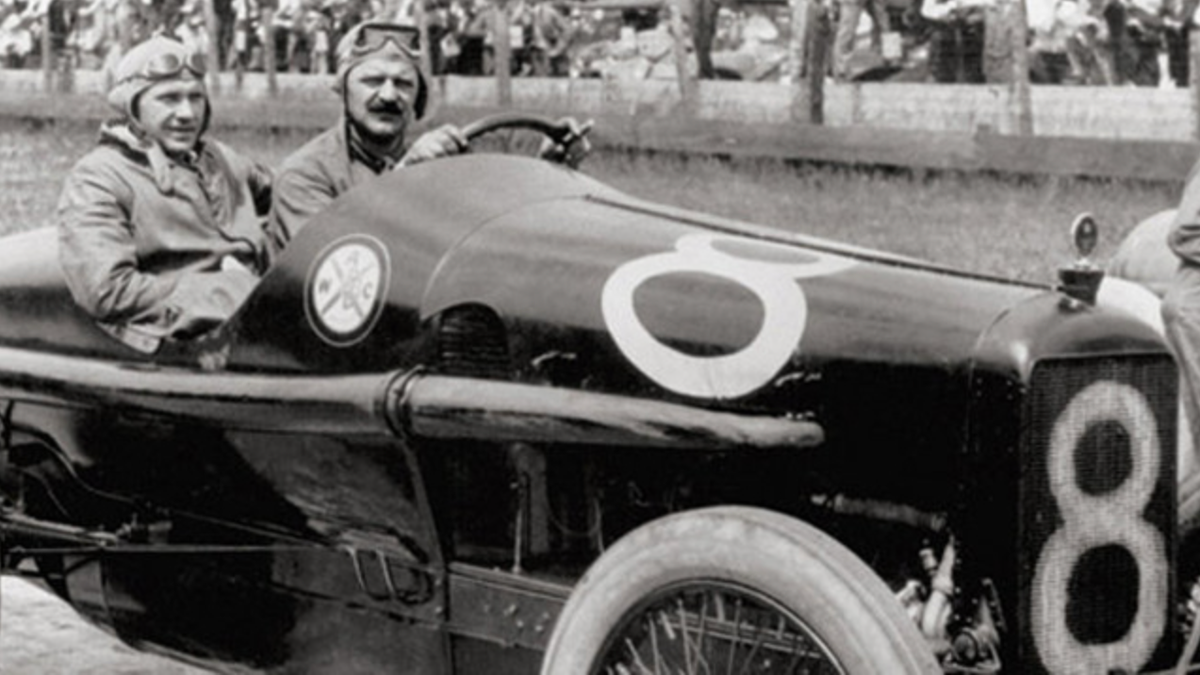One hundred and sixteen years ago this week, William Crapo (yes, really) Durant founded General Motors in the hopes of creating a large conglomerate that could scoop up all the smaller automotive companies blooming in turn of the last century Detroit. While GM would eventually become a huge success, indeed one of the largest companies in the world, its founder died a penniless bowling alley operator reliant on friends to cover his debts.
Banker J.P Morgan would call Durant an “unstable visionary,” many just referred to him as The Man. Durant dreamed of a world covered in freeways during a time when he was still building carriages. He dreamed of fast food before anyone else, and he saw the promise in early technology we now take for granted, like refrigerators. For all this vision, he died penniless in New York, with the Chrysler family and GM CEO Alfred P. Sloan covering his bills.
Around these parts, I focus a lot on the history of the Ford Motor Company, most because I grew up in Detroit where Ford is lionized and denigrated in equal measure. I’ve slept on the weirdness of the other two Big 3 companies for too long. We’re starting at the top, the man who made Flint, Michigan and had more fingers in more transportation pies than a hundred grandmas could bake.
Boston-born Durant entered the scene in 1861 as the child of wealthy parents with French roots. He dropped out of high school at 17 and arrived in Flint after his father abandoned the family. He became a salesmen, selling cigars and lumber before teaming up with a guy named Josiah Dallas Dort to start building carriages in Flint. By 40 he was a millionaire and owner of the largest carriage manufacturer in the U.S. He then turned his attentions to a new kind of carriage—the horseless kind.
When Durant got his hands on Buick in 1904, the automaker was ready to close up shop for good. Four years later, the brand was outselling Ford and Cadillac, combined. JP Morgan (yes that JP Morgan) was the first to suggest a consolidated automaker. He invited Durant, Henry Ford, Ransom Olds (founder of Oldsmobile) and Ben Briscoe of Maxwell-Briscoe to talk about forming a conglomerate. It didn’t work out, but Durant was hung up on the idea. He took a train to Lansing, Michigan and roused Ransom out of bed to agree to a merger. And so, on September 16, 1908 General Motors was incorporated with just the two automakers. Just a year later, Durant almost bought the Ford Motor Company for $8 million. If the bank had been game, Ford would have been a piece of GM.
A little over a year after founding GM, Durant added 22 more companies to the General. Not all of them worked out, but the ones that did are largely still with us today; Cadillac, AC Spark Plug, Delco Oakland (Pontiac), Oldsmobile, McLaughlin (GM Canada) and GMC.
Bankers took over GM starting in 1910 when sales dried up due to a cheap little auto known as the Ford Model T. Out of a job (though still a multimillionaire) Durant founded Chevrolet with Buick race car driver Louis Chevrolet in 1911. It wasn’t until 1916 that Durant got control of GM again. He then folded Chevrolet into the GM family.
Here’s how General Motors itself describes the final downfall of Durant:
In 1920, the post-World War I boom ended, stocks lost 25% of their value, and 100,000 businesses went bankrupt. Durant began secretly buying stock on margin. He felt personally responsible for the thousands of stockholders who had entrusted him with the fate of their funds. Six months later, his $90 million was all gone. He was bailed out again but with a provision that he resign completely from GM. For the second time, he had lost control of the company he had founded. Durant was 59 years old and unemployed.
Durant briefly tried to start another car company—Durant Motors—but it was dissolved in 1933. Durant himself declared bankruptcy in 1937. Not to be deterred, Durant started a bowling alley called the North Flint Recreation Center in 1940 in the shadow of Buick City, a huge GM plant pumping out Buicks on the city’s north side. Everyone told him it couldn’t be done, as the old trucking depot he chose for the site was ill-equipped to be retrofitted, not to mention it was across the street from a church (which would make drinking and bowling unseemly at the time.) Durant said “This will be bowling without beer and it’s going to be done.” He believe bowling was a family friendly activity, not just for men. At this bowling alley Durant built the Horseshoe Inn, one of the first “fast food” drive-in restaurants in the nation.
Though he had a plan to build a nation-wide chain, a stroke in 1942 put an end to those dreams. Still, bowling remains a strong Michigan tradition, which to this day still has more bowling alleys than any state. What Ford did for square dancing, Durant did for bowling.
William Durant died in 1947 at the age of 85 in his apartment in New York City after gaining and losing control of the largest corporation in the world—twice. At the time other major figures in American business history were paying his bills.

